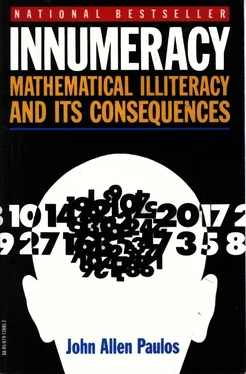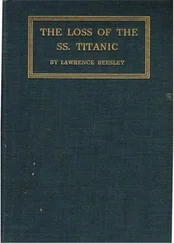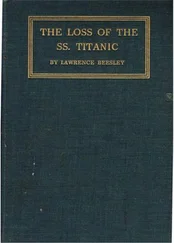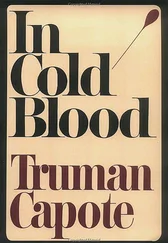Sometimes correlated quantities are causally related, but other "confounding" factors complicate and obscure the causal relations. A negative correlation-for example, between the degree held by a person (B.S., M.A. or M.B.A., Ph.D.) and that person's starting salary-may be clarified once the confounding factor of different types of employers is taken into account. Ph.D.s are more likely to accept relatively lower-paying academic employment than people with bachelor's or master's degrees who go into industry, and thus the higher degree and this latter fact bring about the lower starting salary; a higher degree by itself doesn't lower one's salary. Smoking is without doubt a significant contributory cause of cancer, lung and heart disease, but there are confounding factors having to do with life-style and environment which partially obscured this fact for some years.
There is a small correlation between a woman's being single and her having gone to college. There are many confounding factors, however, and whether there's any causal relation between the two phenomena is unclear, as is its direction, if there is one. It may be that a woman's tendency toward "spinster-hood" is a contributory cause to her attending college, rather than the other way around. Incidentally, Newsweek once stated that the chances of a college-educated single woman over thirty-five getting married were smaller than her chances of being killed by a terrorist. The remark was probably intentional hyperbole, but I heard it quoted as fact by a number of media people. If there were an innumeracy-of-the-year award, this statement would be a strong contender for it.
Finally, there are many purely accidental correlations. Studies reporting small nonzero correlations are often merely reporting chance fluctuations, and are about as meaningful as a coin being flipped fifty times and not coming up heads half the time. Too much research in the social sciences, in fact, is a mindless collection of such meaningless data. If property X (say, humor) is defined in this way (number of laughs elicited by a collection of jokes), and property Y (say, self-esteem) is defined in that way (number of yes responses to some list of positive traits), then the correlation coefficient between humor and self-esteem is.217. Worthless stuff.
Regression analysis, which attempts to relate the values of quantity X to those of quantity Y, is a very important tool in statistics but is frequently misused. Too often, we get results similar to the above examples or something like Y = 2.3 X + R, where R is a random quantity whose variability is so large as to inundate the presumed relationship between X and Y.
Such faulty studies are frequently the basis for psychological tests for employment, insurance rates, and creditworthiness. You may make a fine employee or deserve low premiums or a good credit rating, but if your correlatives are perceived to be lacking in some way, you'll have difficulty, too.
BREAST CANCER, MUGGINGS, AND WAGES:
SIMPLE STATISTICAL MISTAKES
Hypothesis testing and estimates of confidence, regression analysis, and correlation-though all are liable to misinterpretation, the most common sorts of statistical solecisms involve nothing more complicated than fractions and percentages. This section contains a few typical illustrations.
That one out of eleven women will develop breast cancer is a much cited statistic. The figure is misleading, however, in that it applies only to an imaginary sample of women all of whom live to age eighty-five and whose incidence of contracting breast cancer at any given age is the present incidence rate for that age. Only a minority of women live to age eighty-five, and incidence rates are changing and are much higher for older women.
At age forty, approximately one woman in a thousand develops breast cancer each year, whereas at age sixty the rate has risen to one in five hundred. The typical forty-year-old has about a 1.4 percent chance of developing the disease before age fifty and a 3.3 percent chance of developing it before sixty. To exaggerate a bit, the one-in-eleven figure is a little like saying that nine out of ten people will develop age spots, which doesn't mean it should be a major preoccupation of thirty-year-olds.
Another example of a technically correct yet misleading statistic is the fact that heart disease and cancer are the two leading killers of Americans. This is undoubtedly true, but according to the Centers for Disease Control, accidental deaths-in car accidents, poisonings, drownings, falls, fires, and gun mishaps-result in more lost years of potential life, since the average age of these victims is considerably lower than that of the victims of cancer and heart disease.
The elementary-school topic of percentages is continually being misapplied. Despite a good deal of opinion to the contrary, an item whose price has been increased by 50 percent and then reduced by 50 percent has had a net reduction in price of 25 percent. A dress whose price has been "slashed" 40 percent and then another 40 percent has been reduced in price by 64 percent, not 80 percent.
The new toothpaste which reduces cavities by 200 percent is presumably capable of removing all of one's cavities twice over, maybe once by filling them and once again by placing little bumps on the teeth where they used to be. The 200 percent figure, if it means anything at all, might indicate that the new toothpaste reduces cavities by, say 30 percent, compared to some standard toothpaste's reduction of cavities by 10 percent (the 30 percent reduction being a 200 percent increase of the 10 percent reduction). The latter phrasing, while less misleading, is also less impressive, which explains why it isn't used.
The simple expedient of always asking oneself: "Percentage of what?" is a good one to adopt. If profits are 12 percent, for example, is this 12 percent of costs, of sales, of last year's profits, or of what?
Fractions are another source of frustration for many innumerates. A Presidential candidate in 1980 was reported to have asked his press entourage how to convert 2/ 7to a percentage, explaining that the homework problem was assigned to his son. Whether this report is accurate or not, I'm convinced that a sizable minority of adult Americans wouldn't be able to pass a simple test on percentages, decimals, fractions, and conversions from one to another. Sometimes when I hear that something or other is selling at a fraction of its normal cost, I comment that the fraction is probably 4/ 3, and am met with a blank stare.
A man is downtown, he's mugged, and he claims the mugger was a black man. However, when the scene is reenacted many times under comparable lighting conditions by a court investigating the case, the victim correctly identifies the race of the assailant only about 80 percent of the time. What is the probability his assailant was indeed black?
Many people will of course say that the probability is 80 percent, but the correct answer, given certain reasonable assumptions, is considerably lower. Our assumptions are that approximately 90 percent of the population is white and only 10 percent black, that the downtown area in question typifies this racial composition, that neither race is more likely to mug people, and that the victim is equally likely to make misidentifications in both directions, black for white and white for black. Given these premises, in a hundred muggings occurring under similar circumstances, the victim will on average identify twenty-six of the muggers as black-80 percent of the ten who actually were black, or eight, plus 20 percent of the ninety who were white, or eighteen, for a total of twenty-six. Thus, since only eight of the twenty-six identified as black were black, the probability that the victim actually was mugged by a black given that he said he was is only 8/ 26, or approximately 31 percent!
Читать дальше












